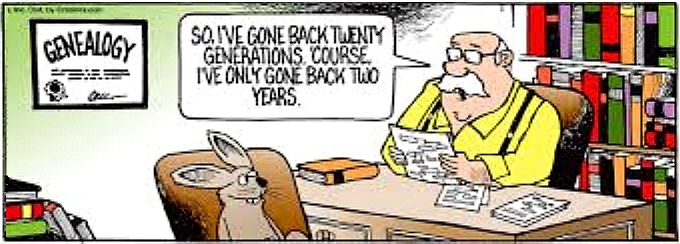|
The
|
THE BURGENLAND BUNCH NEWS - No. 330 April 30, 2022, © 2022 by The Burgenland Bunch All rights reserved. Permission to copy excerpts granted if credit is provided. Editor: Thomas Steichen (email: tj.steichen@comcast.net) BB Home Page: the-burgenland-bunch.org BB Newsletter Archives: BB Newsletters BB Facebook Page: TheBurgenlandBunchOFFICIAL Our 26th year! The Burgenland Bunch Newsletter is issued monthly online. The BB was founded in 1997 by Gerald Berghold, who died in August 2008. |
| Current Status Of The BB: * Members: 3127 * Surname Entries: 9109 * Query Board Entries: 5896 * Staff Members: 13 |
This newsletter concerns: 1) THE PRESIDENT'S CORNER 3) HISTORICAL BB NEWSLETTER ARTICLES: - ELLIS ISLAND BURGENLAND TRANSCRIPTIONS 4) ETHNIC EVENTS 5) BURGENLAND EMIGRANT OBITUARIES (courtesy of Bob Strauch) |
1) THE PRESIDENT'S CORNER (by Tom Steichen)  This
month's random bits and pieces (Article 1) include bits about a
potential Burgenland government delegation visit to North America in 2023, a note that the
1950 census is available online now, the results of the recent Hungarian election, comments on
a new memorial in Kemeten, and a report on the suprisingly low water level in Lake Neusiedl. This
month's random bits and pieces (Article 1) include bits about a
potential Burgenland government delegation visit to North America in 2023, a note that the
1950 census is available online now, the results of the recent Hungarian election, comments on
a new memorial in Kemeten, and a report on the suprisingly low water level in Lake Neusiedl.Our regular tidbits kick off with what will be my last monthly update on corona-virus happenings in Burgenland (unless there is significant change in the situation) and continue with the monthly BB Facebook report, book sales, a recipe and a cartoon-of-the-month. The remaining articles are our standard sections: A Historical BB Newsletter article, Ethnic Events and Emigrant Obituaries.  2023
Burgenland Government Delegation Visit: Word has reached me that discussions have
begun about a potential Burgenland-government-delegation visit to North America in
2023. However, absolutely no details are available yet other than what I just said. 2023
Burgenland Government Delegation Visit: Word has reached me that discussions have
begun about a potential Burgenland-government-delegation visit to North America in
2023. However, absolutely no details are available yet other than what I just said.The last such delegation visit was in 2017, wherein the delegation visited Toronto, Chicago, the Lehigh Valley and New York City, and was led by then  Burgenland
Landeshauptmann (governor) Hans Niessl, Landesrätin [state minister] Astrid
Eisenkopf and Landesrat [state minister] Alexander Petschnig, plus then BG
president Walter Dujmovits and Erwin Weinhofer, a BG vice-president. Burgenland
Landeshauptmann (governor) Hans Niessl, Landesrätin [state minister] Astrid
Eisenkopf and Landesrat [state minister] Alexander Petschnig, plus then BG
president Walter Dujmovits and Erwin Weinhofer, a BG vice-president.However, change has affected both the government and the BG since 2017, with Hans Peter Doskozil the new governor of Burgenland and Eduard Nicka the new president of the Burgenländische Gemeinschaft. Astrid Eisenkopf is now the deputy governor but Alexander Petschnig has been relegated to the opposition. Erwin Weinhofer remains a BG vice-president. Thus, we should expect important differences in the people in the delegation, though I wouldn't be surprised if Astrid and Erwin come again, as they are experienced in how these visits work. A few rumors are about, however: first,
apparently Doskozil's aim in a visit is to lure our younger generations to come visit
Burgenland; and second, they may choose at least one new destination in the US, so perhaps
some new people have an easier way to be involved. So, all you younger people (I'll let you
define what age-range that is!), please know that you would be most welcome to
attend events (wherever they may be) and that, should a new destination be chosen, we
should do our best to support that destination choice (wherever it may be) by our
attendance there!
Verena Dunst, President of the Burgenland Landtag, was also present at the
dedication and said: "In many communities there has been resistance to remember and come to
terms with this. There were many, it wasn't just Kemeten. But there has now been a jolt: we
have to stand by it. Burgenland's history is a success story, but also one with dark chapters.
They need to be worked through, and in every municipality." |
3) HISTORICAL BB NEWSLETTER ARTICLES Editor: This is part of our series designed to recycle interesting articles from the BB Newsletters of 10 years ago. In our April 2012 Newsletter, I recycled an April 2002 article wherein Gerry Berghold gave good advice concerning the need for caution in accepting the recorded or transcribed names of people and places in the Ellis Island ship manifests. Such advice remains accurate, as my note above about the AI-generated transcription of the 1950 census indicates. The fact is, artifical intelligence, or just plain human intelligence, struggles to read the writing on these documents, thus many transcriptions are wrong. Please use caution. THE BURGENLAND BUNCH NEWS No. 106A April 30, 2002; April 30 2012 ELLIS ISLAND BURGENLAND TRANSCRIPTIONS As we search family history records that have been "writ by hand" we enter into a never-never-land of transcription problems. We must become well versed in the script of some long gone recorder and the geography of our places of origin. Research is becoming easier, as helpful people everywhere digitize some of these records for us, translate and compile typed lists and make them available on the internet. We must, however, always look upon such copies with a jaundiced eye. Where the data isn't obvious, we should revert to the original, transcribe it ourselves, or get help. A case in point are the Ellis Island records. Lately, many new BB members are using these records to determine unknown villages of origin. Some of the names are easily recognizable, even if improperly spelled. Others are figments of someone's imagination. Don't misunderstand, I have nothing but the utmost admiration for those intrepid souls who are digitizing these ship manifests, a labor of love. I've searched some of them and the transcriptions are a real challenge. It would require someone well-versed in a particular geographic area to determine the proper names of some of the towns and villages mentioned... when even the immigrants didn't know how to spell them. Many immigrants furnished the name of the largest nearby city. I also am certain that some of the recorded places of origin where taken from papers carried by the immigrants. These documents quite often carry the name of the place where the documents were issued, the district city or capital, not their actual place of residence. For some time, I tried to find my grandfather Berghold's first entry to the United States. I  knew
he came in 1902, married, had three children, returned to Burgenland, built a new house there
and later again migrated to the US (1912). The second voyage record is easily found, the first
was prey to a host of transcriber misspellings. After many attempts, I found him under the
name Barghold. knew
he came in 1902, married, had three children, returned to Burgenland, built a new house there
and later again migrated to the US (1912). The second voyage record is easily found, the first
was prey to a host of transcriber misspellings. After many attempts, I found him under the
name Barghold.This may mean that the first search for a misspelling might best be made by substituting vowels in the spelling of the name. A "B" is easy to recognize (sometimes mistaken for a  "P")
and the vowels "a"-"e"-"o" and "u" are often improperly translated [recorded]. I had first
tried various phonetic spellings (another good approach) without success. I finally found a
record for Johan Barghold (should be Johann Berghold), Hungarian, place of residence ...ut
Gothand (should be Szt. Gotthárd), date of arrival November 26, 1902, age 25, male,
single, arrived on the Kaiser Wilhelm der Grosse from Bremen, ultimate destination
Allentown (correct spelling). "P")
and the vowels "a"-"e"-"o" and "u" are often improperly translated [recorded]. I had first
tried various phonetic spellings (another good approach) without success. I finally found a
record for Johan Barghold (should be Johann Berghold), Hungarian, place of residence ...ut
Gothand (should be Szt. Gotthárd), date of arrival November 26, 1902, age 25, male,
single, arrived on the Kaiser Wilhelm der Grosse from Bremen, ultimate destination
Allentown (correct spelling).No doubt this was my grandfather, everything fits. The ...ut Gothand for Szt. Gotthárd was obvious when I checked the original manifest but, if you weren't aware of this place, you'd never transcribe what was written as such. Szt. Gotthárd in 1902 was the district capital (Hungarian - Jaras, German - Bezirk) for Poppendorf, which was the real village of origin for my grandfather. Without my lengthy experience and knowledge of my family's history, I could be left with the idea that the family name was really Barghold and that they came from some unknown Hungarian place called ut Gothand. I could also spend months searching Szt. Gotthárd church records for the Barghold family, when they are under the name Berghold in Eltendorf (Lutheran parish for Poppendorf). See what I mean? I wonder how many Ellis Island record searchers are making that very mistake? It was interesting that the manifest pages before and after this entry were almost completely filled with Hungarians and Hungarian place names—very few of which were spelled correctly. I pity the poor soul who had to transcribe them and make some sense out of the records, they were probably expert in some unrelated aspect of family history—maybe Hispanic or Asiatic, but not Austro/Hungarian! I've had correspondents take issue with me over my interpretation of the misspellings of village names they have found. After all, they say, it came from an "official" record and must be correct! Even after I point out the obvious, they'd much rather believe what was written. So be it—they face hours of unrewarding research. My grandmother Mühl-Sorger and her mother have perfect Ellis Island records, except that their place of residence is shown as Vienna. I know they never lived there and I have their complete itinerary. They stopped in Vienna and changed trains for Antwerp. Some less experienced searcher would now say that Vienna is their place of origin and get lost in the record morass of that great city. My great-aunt Franziska, who arrived one year later, is shown as coming from Nemet Ujaar, Hungary (no such place). This should be Németújvar, the Hungarian name for Güssing. My grandfather Sorger is shown as coming from Balazsfoln, Hungary. This is probably Balogunyom, which was the nearest railhead to where he was working at the time. By all means, search those Ellis Island records—they are priceless—but don't accept them as gospel without further proof. Data for three out of my four grandparents was in error. At best, they are another clue to your correct family history and a good place to find and buy a picture of their immigration ship to show grandchildren. Obsession with an immigrant's date of arrival in the United States is referred to as the "Mayflower syndrome," but it's a major part of an American family history and the Ellis Island records are the place to look. Editor: Having read the above article, I could not help but smile when I read the next article in that 2002 Newsletter; it was a short snippet about the upcoming 2002 Midwest BB Picnic. In it, the stated location for the picnic was "Wabun Park in Minneapolis, Minnesota." I was born in Minnesota and had lived in Minneapolis for a short while... but I had never heard of a "Wabun Park." A little investigation revealed that the correct wording should have been "Wabun Picnic Area in Minnehaha Park in Minneapolis, MN." For Minnesotans, Minnehaha Park is rather famous... Wabun Picnic Area? ...pretty much unknown. But I doubt Gerry, given his PA roots, had any idea that this was a reverse-twist on the "claim a bigger city" syndrome he had just spoken of! |
4) ETHNIC EVENTS LEHIGH VALLEY, PA Sunday, May 1: Maifest at the Coplay Sängerbund. Music by the Dave Betz Band. Info: www.coplaysaengerbund.com Sunday, May 1: German Maifest Service at St. John's German Lutheran Church in Reading. 11 AM - 12 PM. Live broadcast on WEEU 830AM (www.weeu.com). Choral music by the Reading Liederkranz Singers. Info: www.facebook.com/st.johnsreading. (Following the church service, there will be a brunch at the Reading Liederkranz. Please contact Keith Fox of the Reading Liederkranz Singers for information and reservations: rlksingers.fox@gmail.com) Saturday, May 7: Lancaster Liederkranz Chorus Spring Concert at Zion Evangelical Lutheran Church in Landisville. Followed by dinner at the Lancaster Liederkranz. Accordion music by Don Bitterlich. Info: www.lancasterliederkranz.com Friday, May 13: Kermit Ohlinger at the Reading Liederkranz. Info: www.readingliederkranz.com Saturday, May 14: Maifest at the Reading Liederkranz. Entertainment by Mountain Express, Bavarski, the Edelweiss Schuhplattlers, and the Reading Liederkranz Singers. Info: www.readingliederkranz.com Sunday, May 15: The Jolly Bavarians at the Coplay Sängerbund. Info: www.coplaysaengerbund.com Saturday, May 21: Maitanz at the Lancaster Liederkranz. Music by the Josef Kroboth Orchestra. Info: www.lancasterliederkranz.com Sunday, May 22: The Steelworkers at the Coplay Sängerbund. Info: www.coplaysaengerbund.com Friday, May 27: Kermit Ohlinger at the Reading Liederkranz. Info: www.readingliederkranz.com Sunday, May 29: The Emil Schanta Band at the Coplay Sängerbund. Info: www.coplaysaengerbund.com NEW BRITAIN, CT Friday-Sunday, 1-8 pm: Biergarten is open. Austrian Donau Club, 545 Arch Street. ST. LOUIS, MO (none) UPPER MIDWEST (none) |
5) BURGENLAND EMIGRANT OBITUARIES (none this month) |
| END OF NEWSLETTER (Even good things must end!) |
|
Burgenland Bunch Newsletter, copyright © 2022 by The Burgenland
Bunch |
 News
News (I
would join it within the year) by using my mother's somewhat rare first name, Clara,
and the state and county where they lived... though I did have to "interpret" the adjoining
transcribed names to recognize my father's given name and surname (both were transcribed
significantly incorrect!). You also have the opportunity to correct the AI-generated names. To
do so, you must submit your email address and then submit a verification code that will be
sent to your email address. Thereafter, you are authorized to make any number of corrections.
(I
would join it within the year) by using my mother's somewhat rare first name, Clara,
and the state and county where they lived... though I did have to "interpret" the adjoining
transcribed names to recognize my father's given name and surname (both were transcribed
significantly incorrect!). You also have the opportunity to correct the AI-generated names. To
do so, you must submit your email address and then submit a verification code that will be
sent to your email address. Thereafter, you are authorized to make any number of corrections.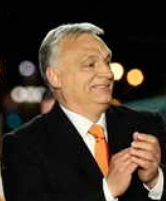 Hungarian
Election: Last month, I wrote this about the Hungarian election: "In just a few
days, we will see what the Hungarian public feels about this choice," a choice that
Hungarian prime minister Viktor Orbán said was between a leftist opposition that would
drag Hungary into the Ukraine war, and the peace and stability only his conservative Fidesz
can offer.
Hungarian
Election: Last month, I wrote this about the Hungarian election: "In just a few
days, we will see what the Hungarian public feels about this choice," a choice that
Hungarian prime minister Viktor Orbán said was between a leftist opposition that would
drag Hungary into the Ukraine war, and the peace and stability only his conservative Fidesz
can offer.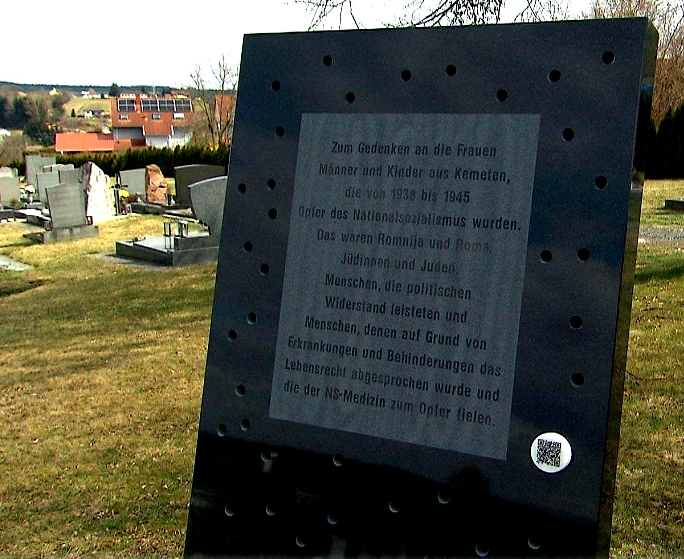 In
memory of the women, men and children from Kemeten who became victims of National
Socialism between 1938 and 1945. These were Roma women and men and Jewish women and
men, people who offered political resistance and people whose right to live was
denied due to illnesses and disabilities and who fell victim to Nazi medicine.
In
memory of the women, men and children from Kemeten who became victims of National
Socialism between 1938 and 1945. These were Roma women and men and Jewish women and
men, people who offered political resistance and people whose right to live was
denied due to illnesses and disabilities and who fell victim to Nazi medicine. Corona
Virus in Burgenland: I've decided this will be my last report on the virus in
Burgenland... unless, of course, there is a dramatic change that I think you should be aware
of.
Corona
Virus in Burgenland: I've decided this will be my last report on the virus in
Burgenland... unless, of course, there is a dramatic change that I think you should be aware
of.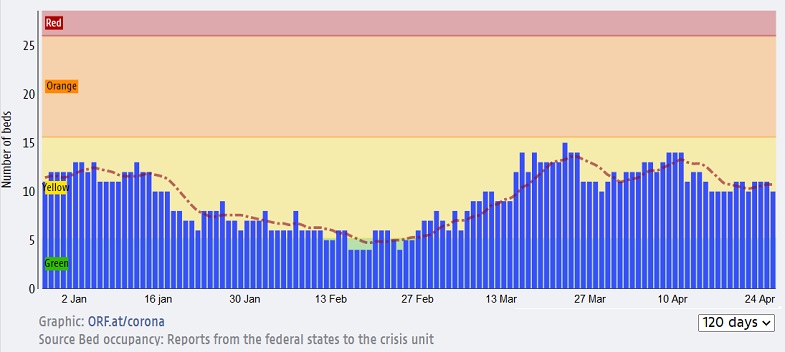
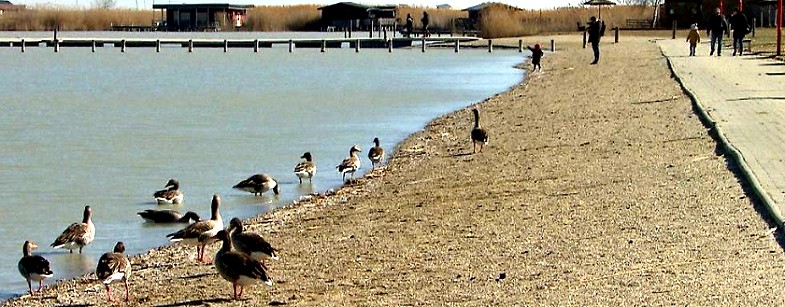
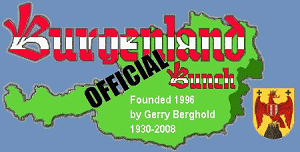 The
Facebook Bunch (from Vanessa Sandhu):
The
Facebook Bunch (from Vanessa Sandhu): Update
for book "The Burgenländer Emigration to America": Here is this month's update on
purchases of the English issue of the 3rd edition of Dr. Walter Dujmovits' book "Die
Amerika-Wanderung Der Burgenländer."
Update
for book "The Burgenländer Emigration to America": Here is this month's update on
purchases of the English issue of the 3rd edition of Dr. Walter Dujmovits' book "Die
Amerika-Wanderung Der Burgenländer."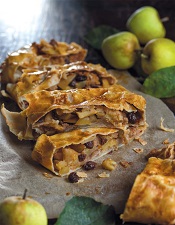 Oma’s Apfel Strudel
Oma’s Apfel Strudel 
